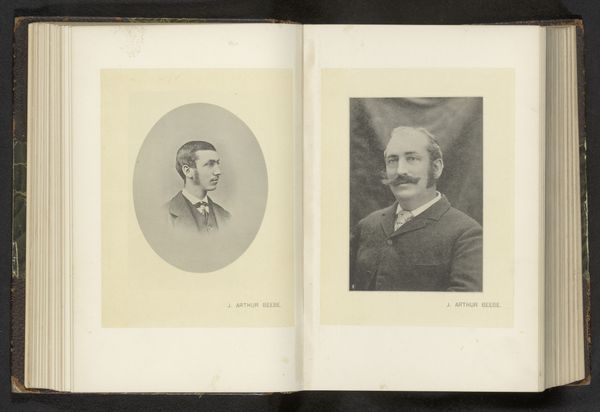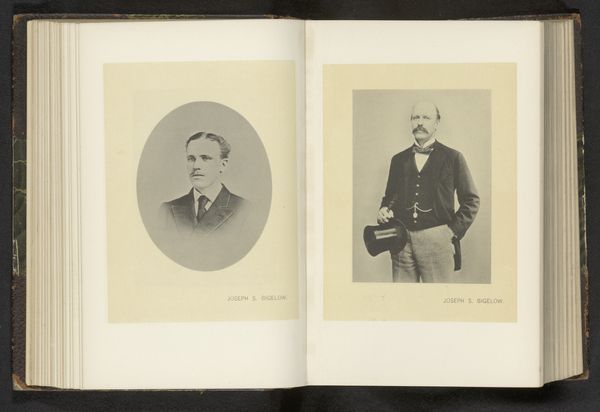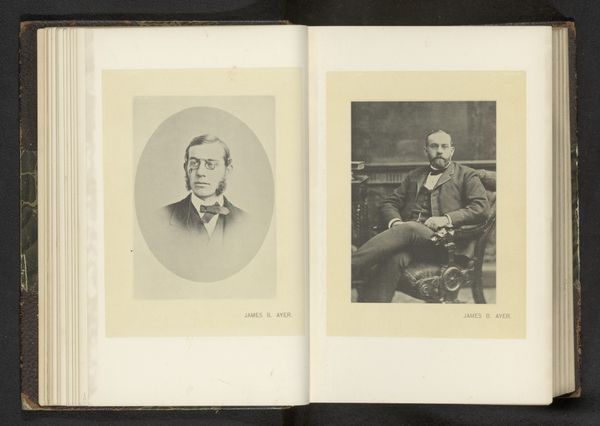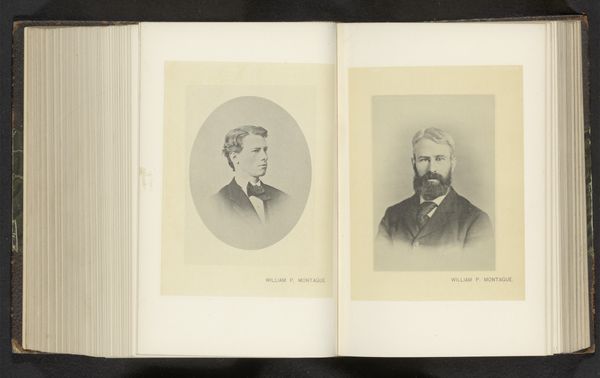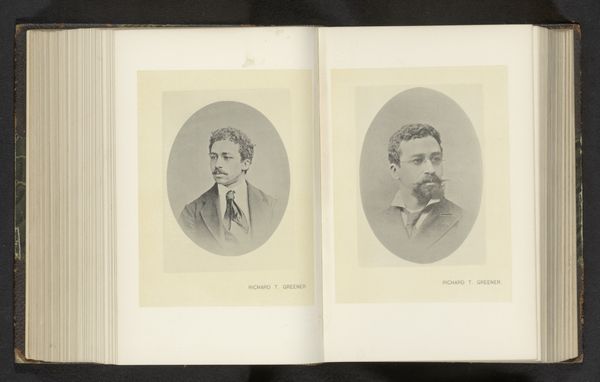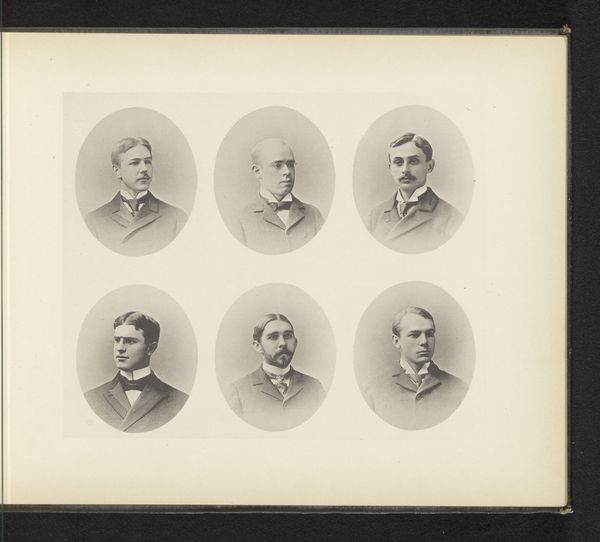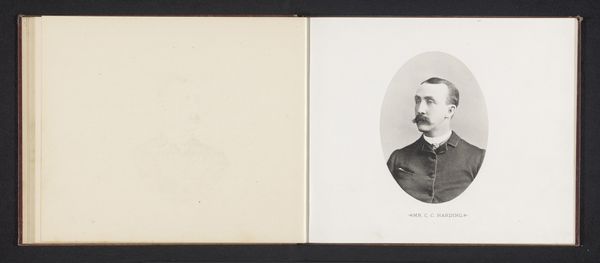
photography, albumen-print
#
portrait
#
aged paper
#
homemade paper
#
paper non-digital material
#
paperlike
#
sketch book
#
personal journal design
#
paper texture
#
photography
#
personal sketchbook
#
folded paper
#
paper medium
#
albumen-print
Dimensions: height 117 mm, width 83 mm
Copyright: Rijks Museum: Open Domain
This is a photographic print of Archibald M. Howe, likely made in the United States. The absence of a known artist invites us to consider the broader cultural context in which photography gained prominence. During the late 19th century, photographic portraits became increasingly accessible to the middle class, signaling a shift in how individuals could represent themselves and their social status. The visual codes, such as the formal attire and carefully groomed appearance of Mr. Howe, reflect the values of respectability and social aspiration prevalent in that era. To fully understand this image, one might explore the history of photographic studios, the rise of portraiture as a democratic art form, and the social dynamics that shaped personal representation. These photographs offer a glimpse into the social and institutional forces that influenced the production and reception of art in the 19th century.
Comments
No comments
Be the first to comment and join the conversation on the ultimate creative platform.

